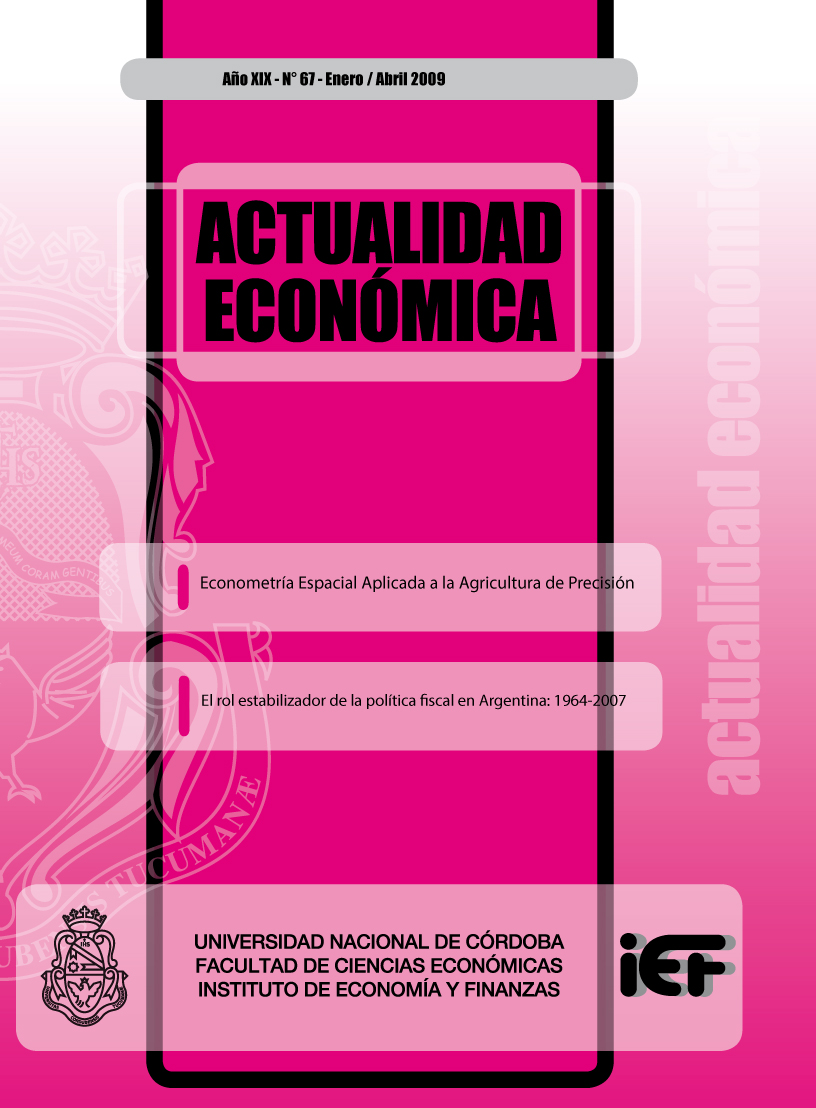Econometría Espacial Aplicada a la Agricultura de Precisión
Keywords:
Econometría espacial, Agricultura de Precisión, Productividad AgrícolaAbstract
La agricultura de precisión se define como la “aplicación de tecnologías y principios de manejo de cultivos para manejar la variabilidad espacio-temporal asociada a la producción agrícola”.
El artículo muestra cómo la econometría espacial se puede aplicar al estudio de los datos del monitor de rendimiento para estimar la respuesta del cultivo al fertilizante.
En un estudio de caso de fertilización del maíz con nitrógeno en 1998-99 indican: hay autocorrelación espacial y heterocedasticidad en la respuesta del maíz; la respuesta al nitrógeno y las dosis óptimas de nitrógeno difieren en las distintas posiciones topográficas dentro del lote; la dosis variable de nitrógeno es rentable a un costo extra de USD 6 ha-1; la respuesta al nitrógeno y las dosis óptimas por posición en el lote difieren de año en año.
Este resultado es interesante y alienta el uso de la econometría espacial en modelos espaciales, como una herramienta efectiva para determinar la rentabilidad de la dosis variable. Se debe tener en cuenta que se trata de un análisis “ex-post”, es decir, se asume que la respuesta del cultivo al N se conoce al momento de realizar la fertilización. A pesar de que la respuesta esperada nunca se va a conocer con certeza, un análisis económico de este tipo es el punto de partida que permite comenzar a comprender las implicaciones del manejo sitio-específico.Downloads
Downloads
Published
Issue
Section
License

This work is licensed under a Creative Commons Attribution-NonCommercial-NoDerivatives 4.0 International License.
Those authors who have published with this journal, accept the following terms:
Authors will conserve their copyright and guarantee the magazine the right of first publication of their work, which will be simultaneously subject to the Creative Commons Attribution-NonCommercial-NoDerivative 4.0 International License that allows third parties to share the work as long as the author and first publication of this magazine are indicated.
Authors may adopt other non-exclusive license agreements to distribute the published version of the work (e.g., deposit it in an institutional telematic archive or publish it in a monographic volume) provided that the initial publication in this journal is indicated.
Authors are allowed and encouraged to disseminate their work through the Internet (e.g., in institutional telematic archives or on their website) before and during the submission process, which may lead to interesting exchanges and increase citations of the published work. (See The effect of open access)









